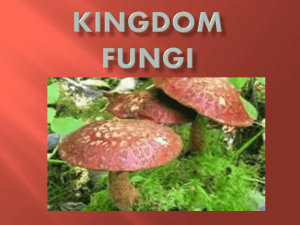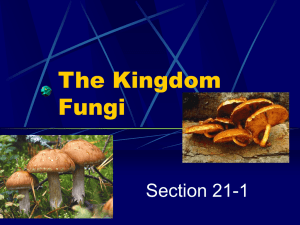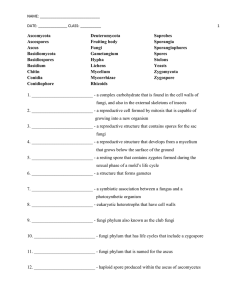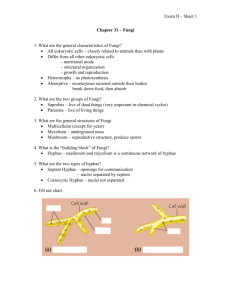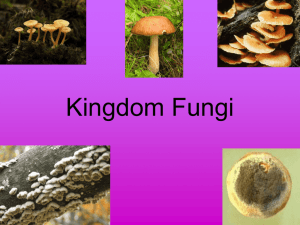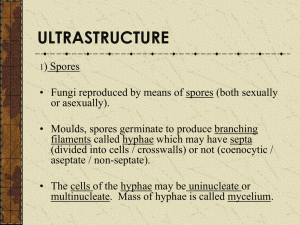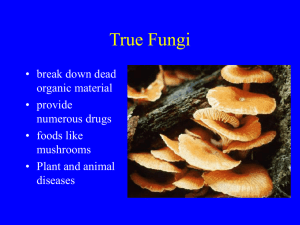Kingdom Fungi: Characteristics, Structure & Reproduction
advertisement
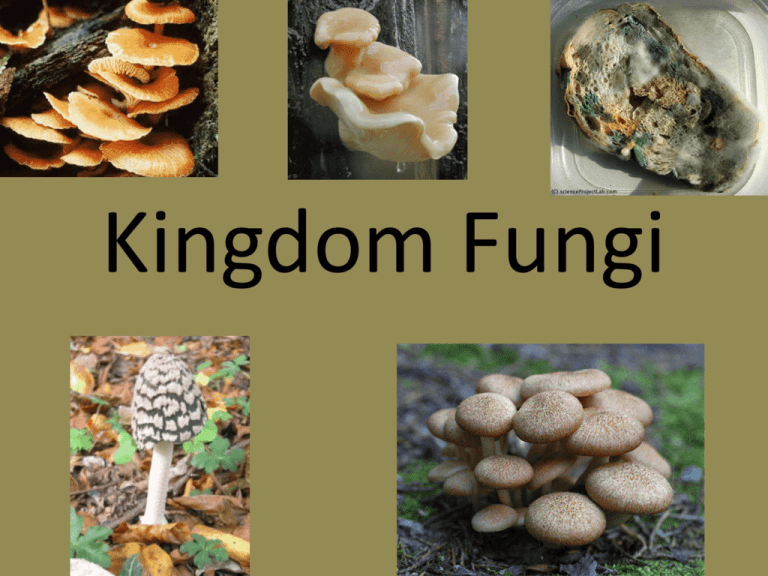
Kingdom Fungi What are Fungi? • Fungi are NOT PLANTS • Study of fungi = mycology • Defined as a – single or multi-celled eukaryote with heterotrophic, absorptive nutrition, chitinous cell walls, and which stores energy as glycogen. Characteristics • Heterotrophic – Cannot make own food • Absorptive nutrition – Produce enzymes that break down food outside body – Then absorb small molecules released by enzymes Characteristics • Cell walls made of chitin – 2 general growth patterns • Single cells: example is yeast • Hyphae: example mushrooms • Reproduce by spores • Vital role in ecosystem – Decomposers – Symbiotic – Predators – Cordycepes: The Killer Fungus Structure & Function • Hyphae – – – – – Tubular Long, slender branching filaments Hard wall of Chitin Crosswalls may form compartments Grow at tips Structure & Function • Fruiting Body – Reproductive structure – Grows from mycelium • Mycelium – Mass of branching hyphae below soil • Example: Mushroom Fungal Structure Video Fruiting Body and Mycelium Reproduce by Spores • Spores are reproductive cells – Sexual: plus (+) and minus (-) – Asexual: budding or breaking hyphae • Formed – Directly on hyphae – Inside sporangia – Fruiting bodies Above: Hyphae Middle: sporangia Far Left: fruiting body Hyphal growth from spore Germinating spore Mycelium Mycelia have a huge surface area Asexual Reproduction Sexual Reproduction Diversity of Fungi Classified by their reproductive structures Phylum Basidiomycota “Club Fungi” Gills with Basidia Cap Rhizoids Spores Released! Phylum Ascomycota “Sac Fungi” Baker’s Yeast Penicillium Morels True Morel False Morel Asci with ascopores Phylum Zygomycota Mycorrhizae Rhizopus mycelium Bread Mold with sporangia Zygospore Ecological Role • Decomposers – break down complex molecules into sugars or consume sugars found in environment. – Examples • Common bread molds • Shelf fungi • White button mushrooms Ecological Role • Symbiotic Fungi – receive their energy (carbohydrates) directly from a plant or algal partner. • Examples – mycorrhizal fungi (live on plant roots) • 90% of all plants have fungal relationship – lichens (contain algae) "The Rotten World About Us"


